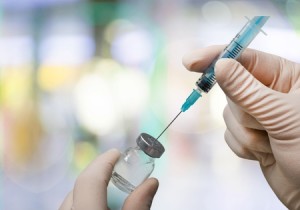Vaccinating half of population by summer could prevent millions of COVID-19 cases in US — study

INQUIRER.net stock image
Research from the United States highlights the importance of vaccination in reducing the number of COVID-19 infections. In fact, some 6.8 million cases could be prevented if the U.S. vaccinates half its population by the summer.
In the U.S., 30% of the population is fully vaccinated against COVID-19, while 56% or around 145 million people have already received at least one dose. But the rate of daily vaccinations has started to slow. In response, President Joe Biden has set a new target of vaccinating 70% of American citizens or 160 million people with at least one dose by U.S. Independence Day, July 4.
This objective is underscored by a study published in the Journal of Infectious Diseases. If the U.S. manages to vaccinate 50% of its population by the summer, 6.8 million COVID-19 cases could be avoided this fall, predicts the study, led by researchers from PHICOR (Public Health Informatics, Computational, and Operations Research) at CUNY Graduate School of Public Health & Health Policy, the National School of Tropical Medicine at Baylor College of Medicine, and Johns Hopkins Center for Health Security.
The researchers suggest that limiting the number of cases in this way could save $9.8 billion in societal costs. While the vaccination drive also comes with costs, “such investments may end up paying for themselves,” explains Sarah Bartsch, MPH, the study’s lead author and project director for PHICOR.
“For example, the potential cost savings exceed the $1.5 billion Biden Administration community outreach and media campaign. Our results show that increasing total vaccination coverage by just one percent could cover the costs of this effort,” she said.
A 1% increase in vaccination could prevent 7,100 deaths
“The longer it takes to reach higher vaccination coverage levels and herd immunity thresholds, the more the virus can spread,” says Bruce Y. Lee, senior author of the study, executive director of PHICOR, and CUNY SPH professor. To calculate their projections, the team developed a computer model simulating the effect of vaccinating different proportions of the population at different rates with different types of COVID-19 vaccines.
The good news is that positive effects can be seen even with small increases in vaccine coverage. Results from the model showed that each 1% increase between 40% and 50% of the U.S. population being vaccinated by the fall can prevent 1.6 million cases, 60,190 hospitalizations, 7,100 deaths, and save $674.2 million in direct medical costs and $1.5 billion in productivity losses. Each 1% increase between 50% and 70% can prevent 473,900 cases, 17,600 hospitalizations, 2,000 deaths and 537 million in direct medical costs and productivity losses.
But time is ticking, and the scientists recommend vaccinating as many people as possible by the end of fall.
“It may be particularly important to reach higher coverage levels before the late fall to prevent another winter surge,” warns Lee. And that’s irrespective of which vaccines are used, because the study highlights the value of using all COVID-19 vaccines that are available to get more people vaccinated as soon as possible, rather than focusing only on those with the highest effectiveness. JB
RELATED STORIES:
Bar owner who sold fake COVID-19 vaccination cards arrested
Two men who sold fire extinguishers as oxygen tanks arrested
For more news about the novel coronavirus click here.
What you need to know about Coronavirus.
For more information on COVID-19, call the DOH Hotline: (02) 86517800 local 1149/1150.
The Inquirer Foundation supports our healthcare frontliners and is still accepting cash donations to be deposited at Banco de Oro (BDO) current account #007960018860 or donate through PayMaya using this link.